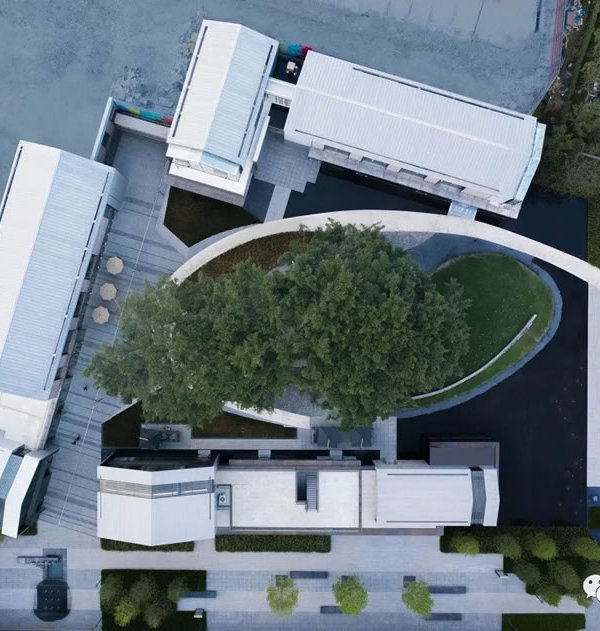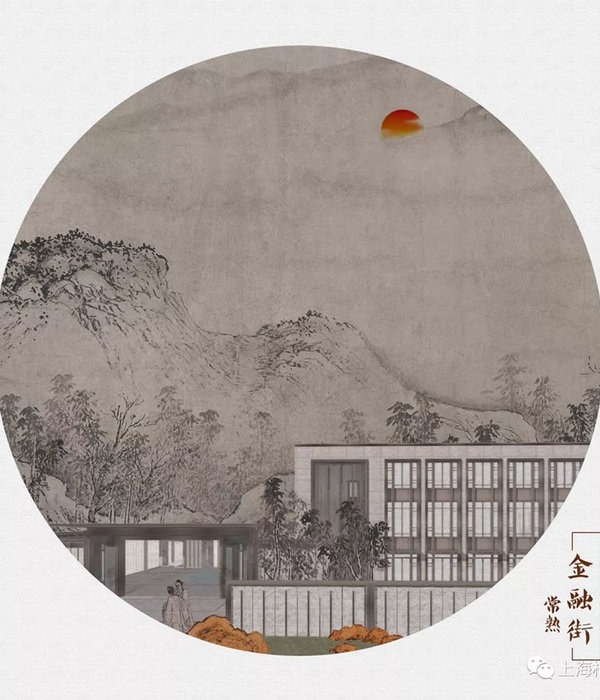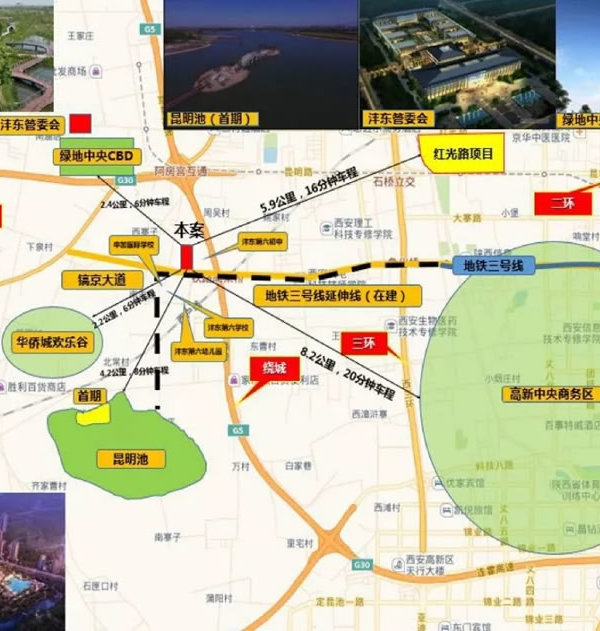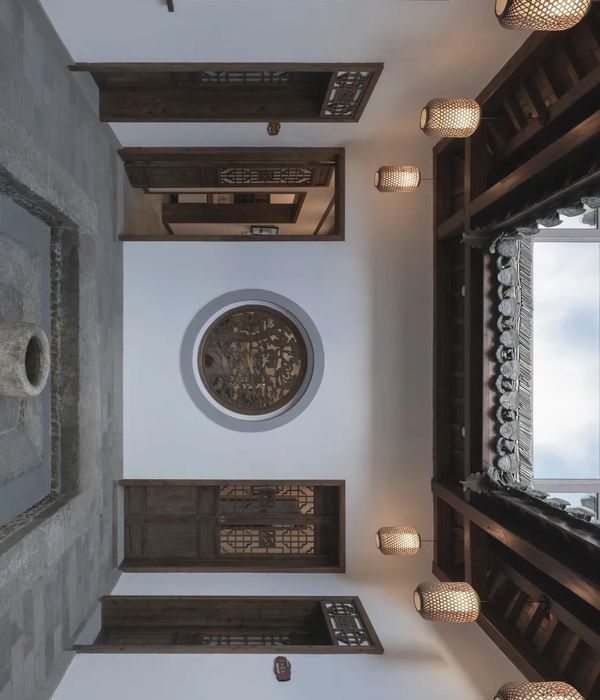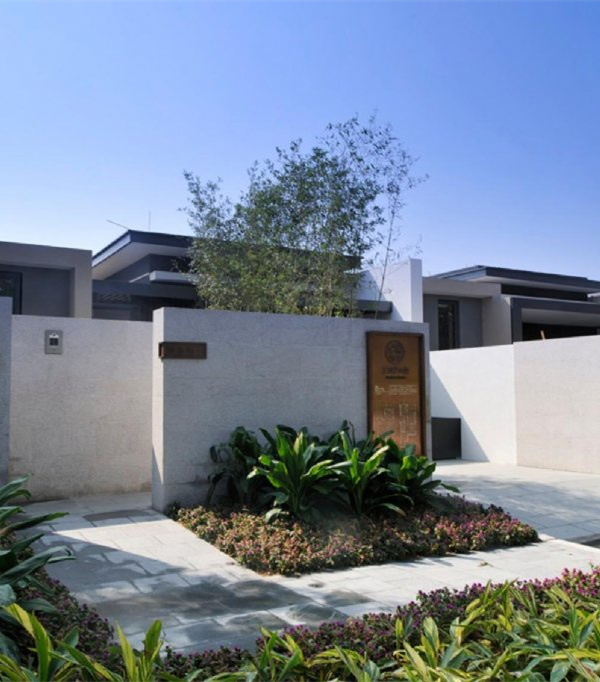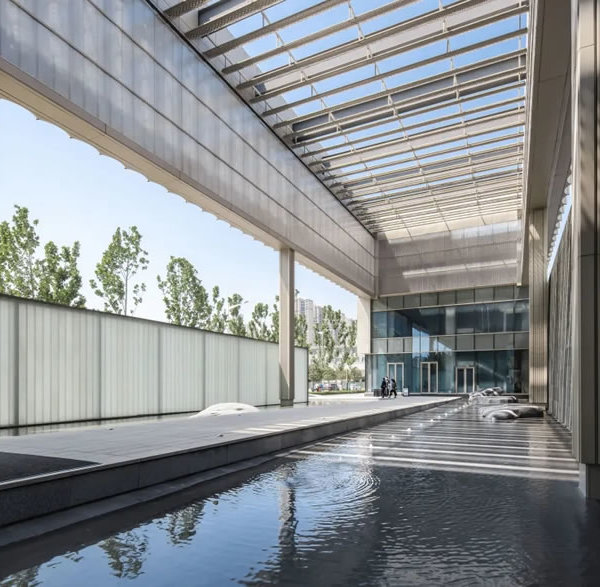来自
ASLA
West Philadelphia Landscape Project |
Anne Whiston Spirn, FASLA
项目概述
PROJECT STATEMENT
西费城景观项目(WPLP)的主要目标是恢复自然、重建社区,以公平、包容且可持续的方式提升青年人的能力,同时促进人与地方的恢复力。自1987年实施以来,西费城景观计划和由此产生的一系列项目证明了如何将对环境质量、贫困、种族、社会公平和教育改革的关注与景观的功能与美学加以结合。
WPLP的第一阶段(1987-1991)推出了《西费城景观规划方案》。规划通过三个连续的阶段逐步实施,完成了能够帮助测试和完善该计划的示范性项目,并从成功和失败中获取了经验和教训。现阶段的重点是扭转低收入社区的环境改善工作所带来的意料之外的不良后果,即“绿色”中产阶级化引发的流离失所的问题。
WPLP目前已经产生了广泛的影响,不仅改变了个体的生活,还促成了费城标志性计划“绿色城市,清洁水体”的推行。WPLP赢得了大范围的认可,并作为一种有效的规划模式被各大报纸、专业期刊和广播/电视报道。自1996年以来,WPLP的官方网站已被来自90多个国家的用户访问数百万次。
The principal goal of the West Philadelphia Landscape Project (WPLP) is to restore nature, rebuild communities, and empower youth in ways that are equitable, inclusive, and sustainable, that foster resilience in people and place. Since 1987, the West Philadelphia Landscape Plan and projects that flowed from it, have demonstrated how to combine concerns for environmental quality, poverty, race, social equity, and educational reform, along with function and aesthetics.
WPLP’s first phase (1987-1991) produced the West Philadelphia Landscape Plan. Three successive phases have fostered support for the plan, produced demonstration projects to test and refine it, and derived lessons from successes and failures. The current phase is focused on reversing unanticipated consequences of environmental improvements in low-income communities: displacement from “green” gentrification.
WPLP has had broad influence, from the impact on individuals whose lives were changed to Philadelphia’s landmark plan, “Green City, Clean Waters.” WPLP has been widely recognized and cited as a model, featured in newspapers, professional journals, and radio/television broadcasts. Since 1996, WPLP’s website has received millions of visits from more than 90 countries.
▲寻找被掩埋的河流(1987年至今):Mill Creek被掩埋在下水道里,但它破坏了建筑物,并在暴风雨后向四处冲刷污水。为了解决这些问题并教育民众,西费城景观项目(WPLP)记录并绘制了既有溪流及其被掩埋的洪泛区和流域。In Search of the Buried River (1987-Present). Mill Creek is buried in a sewer, but it undermines buildings and flushes sewage after storms. To resolve these problems and educate people, the West Philadelphia Landscape Project (WPLP) documents and maps the former creek, its buried floodplain and watershed.
项目说明
PROJECT NARRATIVE
目标
西费城景观项目(WPLP)的主要目标是以公平、包容和可持续的方式恢复自然、重建社区、提升青年力量并促进人与地方的恢复能力。自1987年以来,西费城景观计划和由此产生的一系列项目证明了如何将对环境质量、贫困、种族、社会公平和教育改革的关注与景观的功能与美学加以结合。项目的次要目标是验证如何利用大学资源(教师工资、生源和补助金)来解决长期存在的环境和社会挑战。以上这些问题均被涵盖在景观设计的潜在范围内。
背景
1980年代的费城和许多城市一样陷入了困境:内城的社区充斥着空置和被废弃的土地;半个世纪以来的种族主义政策和投资短缺导致了非裔居民的高贫困率;大量的合流污水溢流(CSO)在暴雨过后被冲入河流;公园维护因资金的不足而受到阻碍;公立学校面临倒闭;各种环境和社会项目都在争夺稀缺的资金。西费城景观计划正是在这样一种充满危机的背景下诞生。
不过,到了2010年代,费城经历了蓬勃发展,资本逐渐流入西费城的一些以非裔居民为主的低收入社区。掠夺性贷款和侵略性投机者肆无忌惮的行为导致大量业主正在失去他们的家园。新建和翻新的公园导致了“绿色”中产阶级化和居民流离失所的现象。2017年,WPLP调整了计划方向以应对这一新的挑战。
WPLP的第一阶段(1987-1991)推出了《西费城景观规划方案》,其中包括对已建成项目的干预。规划通过三个连续的阶段逐步实施,完成了能够帮助测试和完善该计划的示范性项目,并从成功和失败中获取了经验和教训。
WPLP并没有传统意义上的客户。该项目将大学作为基地,与不同的合作伙伴展开合作,包括社区园艺师、教师和儿童、教会成员以及政府官员等,并免费分享成果。具体的互动模式包括团体游说、参与式设计、能力建设以及知识的协同生产等。
被掩埋的河流
水作为一个关键性的环境要素,需要制定规章来保证其质量的监管以及实施需要用到的资金。为了防止合流污水溢流(CSO)所花费的资金达到数十亿美元。西费城的许多空置土地都位于Mill Creek被掩埋的洪泛区,这条埋在下水道中的河流承受着西费城三分之二的雨水和生活污水。自1987年以来,WPLP示范了这些空地上的“绿色”基础设施如何通过截流来防止CSO,从而保证了重建低收入社区所需要的资金。规划方案的信息统计、提案和已建成项目展示了实现这一目标的过程(利用绿色基础设施来防止CSO,在今天仍被认为是一个创新性的举措,直至2000年代才得到实施)。
西费城景观规划方案: 行动框架(1987-1991)
WPLP结合了自上而下(宏观)和自下而上(基层)的方法。方案的框架由街道、街区和被掩埋的洪泛区结构组成,并将由个人、组织和公共机构的行动来填补。该计划确定了各项机会、潜在的行动者和资金、不采取行动的成本和既有的建筑类型。被掩埋的洪泛区将构建“Mill Creek公园”,并将其作为规划框架的核心部分,届时低洼的空地将被用于容纳雨水以防止CSO,新的设计也将使被掩埋的溪流重新显现。计划的其他部分还包括城市森林、小型街区的重新设计,以及一座数字数据中心。
项目团队的工作从1987开始,他们并未采取从数据分析到计划、再到设计和实施的一般进程,而是在开始统计人口和环境数据时就完全投身于社区花园的设计和建造。后来,他们意识到了这个繁杂的过程为项目带来了极为丰富的观察角度。一个项目的建成永远不会是终点,而是一个揭示被误解或被忽视的信息的开始。至此以后,数据分析、规划、设计、实施与评估全都同步进行,每项行动都将在一个不受限制且不断迭代的过程中为其他的行动提供信息。
项目团队曾致力于对1994年的西费城计划施加影响,但最终未能实现。对失败的反思推动了后续阶段的进行,旨在通过公共教育、设计和原型评估以及城市提案评估来为计划提供支持。
当学习成为现实(1994-2002)
WPLP的第二阶段(1994-2002)加强并扩大了计划的范围,并将重点放在Mill Creek流域以及青年变革者的培养和教育上。行动成果包括:一个作为教育论坛和公共资源的网站;Mill Creek项目;一项公立中学课程;建筑和景观原型的设计、建造和评估(旨在测试和证明未来更宏大提案的可行性);与社区团体、公立学校和城市机构联合发起的拨款提案(完成了规划中的一部分,并为社区带来了新的资源)。
绿色城市,清洁水体(1999至今)
Mill Creek项目为众多社区领袖带来了启发,他们邀请WPLP与致力于社区改善的团体Mill Creek联盟进行合作,共同举办了以被掩埋的溪流为主题的研讨会,评估了被掩埋的洪泛区所遭受的损害,并与费城水务局(PWD)开展了讨论会议。1999年,PWD邀请项目团队Mill Creek,以确定雨水截流的地点,这也直接推动了示范性项目的建立:一个可以截存雨水的户外教室,由PWD与Sulzberger合作建造。
2009年,PWD宣布了里程碑式的“绿色城市,清洁水体”计划,旨在通过绿色基础设施来消除CSO。该计划要求将城市的不透水表面减少30%,如果取得成功,将为城市节省数十亿美元,同时增强对气候变化的适应力并减缓城市热岛。不过,这项计划是否能够(在物理上)成功实现,以及是否能够(对经济和政治)产生积极影响,还要持续关注WPLP第三阶段(1999-)的推进情况。目前的成果是:通过WPLP的附属课程,学生们在Mill Creek流域实施的规划和设计检验了PWD计划的可行性,并确定了将环境修复、社区发展和青年能力的培养整合在一起的机会。
坚守阵地(2017至今)
当改善环境质量的努力导致了中产阶级化和流离失所的问题时,你会如何去做?为了解决这一危机,WPLP正在制定一项行动计划:与社区伙伴合作(包括西费城最古老的黑人教堂);设计/规划对绿色基础设施的公共投资;以及战略性地保护现有居民的使用权。
影响
WPLP发挥了广泛的影响力并获得了广泛的认可,包括各大报纸、专业期刊、广播/电视的报道,并被美国科学促进会、国家住房研究所等机构引用为示范案例。WPLP官方网站于1996年推出,迄今已被来自90多个国家的用户访问数百万次。该计划对个人的影响也同样重要,大量居民的生活因为WPLP的项目而发生了的改变(查看他们的感想:
)。
▲绘制被掩埋的洪泛区地图(1989年):1987年,费城还没有任何地形测绘图,为此项目团队将街角的海拔高度数字化,并使用“超级计算机”进行修改并创建等高线(右上)。左下和右下图展示了被掩埋的洪泛区中的低点与空置土地之间的关联性。Mapping the Buried Floodplain (1989). In 1987, Philadelphia had no topographic maps, so we digitized elevations at street corners and used a “supercomputer” to interpolate and create contours (upper right). Lower left and right: correlation between low spots in the buried floodplain and vacant land.
▲绘制被掩埋的洪泛区地图(2015年):通过对19世纪的调查结果进行数字化,并将其叠加至当前的地形,项目团队绘制了被掩埋的洪泛区的精确位置和填埋深度(在许多区域超过30英尺)。团队与费城水务局分享了方法和成果,取得了显著成效。Mapping the Buried Floodplain (2015). By digitizing nineteenth-century surveys and overlaying them on current topography, we mapped the buried floodplain’s precise location and depth of fill (30+ feet in many areas). We shared our methods and findings with the Philadelphia Water Department to great effect.
▲绘制被掩埋的洪泛区地图(2018年):WPLP在网站(
)上展示了数据、发现、建议和方案。这幅互动地图允许观众以叠加的方式查看从1849年至今的基础地图。本图展示的是被掩埋的溪流、洪泛区以及1910年的发展程度。Mapping the Buried Floodplain (2018). WPLP presents data, findings, proposals, and programs on our website (
t). This interactive map permits viewers to overlay various factors on base maps from 1849 to the present. Here: the buried stream, buried floodplain, and extent of development in 1910.
▲西费城景观计划: 行动框架(1987-1991):WPLP结合了自上而下和自下而上的方法来恢复自然并重建社区。项目团队与合作伙伴共同为Mill Creek流域和社区制定规划、方案和设计,创建了一个开放的框架,邀请个人、团体和公共机构贡献自己的力量。 The West Philadelphia Landscape Plan: A Framework for Action (1987-1991). WPLP combines top-down and bottom-up approaches to restoring nature and rebuilding community. Working with partners on plans, programs, and designs for Mill Creek’s watershed and community, we create an open framework that invites individuals, groups, and public agencies to contribute.
▲西费城景观规划方案发行物(1990-1991):五项不同的发行物组成了最初的计划:《行动框架》;《空地:作为重塑城市社区的资源》;《成功的案例:景观改善和社区发展》;《塑造街区》;以及《是花园也是城市》。West Philadelphia Landscape Plan Publications (1990-1991). Five publications, all available on the WPLP website, comprised the original plan: A Framework for Action; Vacant Land: A Resource for Reshaping Urban Neighborhoods; Models of Success: Landscape Improvements and Community Development; Shaping the Block; This Garden Is a Town.
▲设计行动框架: 作为规划的提案之一,Mill Creek公园项目(1991年至今)是一个以防止CSO为目的雨水管理公园。与传统的公园不同,它涵盖了非娱乐性的用途和多方赞助者参与的多样化项目。费城市目前已实施了提案的多个方面。Designing a Framework for Action: Mill Creek Park (1991-Present). One of the plan’s proposals: Mill Creek Park, a stormwater management park to prevent CSOs. Unlike conventional parks, it would include non-recreational uses and diverse projects with many sponsors. The City of Philadelphia has implemented aspects of the proposal.
▲设计行动框架: 阿斯彭农场社区花园(1988年至今)是一个示范性的项目。位于被掩埋洪泛区的既有农场被重新设计。自1988年以来,花园的“主街”为多个花园的发展提供了框架。该设计的成功也为多个团队的长期合作建立了基础。Designing a Framework for Action: Aspen Farms Community Garden (1988-Present). The plan included demonstration projects. We redesigned Aspen Farms, which is on the buried floodplain. The garden’s “main street” is a frame within which the garden has evolved since 1988. That design’s success is the foundation of our long-term partnership.
▲当学习成为现实:Mill Creek项目(1994-2002)。为了建立对规划方案的支持,WPLP与阿斯彭农场和Sulzberger中学(曾是费城考试均分最低的学校之一)建立了合作关系。学生们开始学会解读他们的景观,追溯景观的过去并设想其未来。当学习成为现实,孩子们的成绩也取得了显著进步。When Learning Is Real: The Mill Creek Project (1994-2002). To build support for the plan, WPLP partnered with Aspen Farms and Sulzberger Middle School, among Philadelphia’s worst in test scores. Children learned to read their landscape, tracing its past, envisioning its future. When learning was real, academic performance soared.
▲当学习成为现实:从学校到社区(1994-2002年)。 Mill Creek项目加强了与阿斯彭农场的联系(该农场成为Mill Creek项目的户外教室),并促成了与Mill Creek联盟的合作——该联盟是致力于社区发展和环境改善的社区领袖团体。When Learning Is Real: From School to Community (1994-2002). The Mill Creek Project strengthened ties to Aspen Farms (which became The Mill Creek Project’s outdoor classroom) and led to a partnership with the Mill Creek Coalition, a group of community leaders devoted to community development and environmental improvement.
▲学习景观专业知识:青年作为变革力量(1994-2002)。WPLP将景观知识作为社区发展的基石。学习景观专业知识使年轻人能够阅读蕴含在当地景观中的环境、社会、经济和政治故事,并使他们学会构思新的故事和预见变化。Learning Landscape Literacy: Youth as Agents of Change (1994-2002). WPLP employs landscape literacy as a cornerstone of community development. Learning landscape literacy enabled youth to read environmental, social, economic, and political stories embedded in their local landscape and gave them a way to formulate new stories, to envision change.
▲改造城市景观工作室(1996-1998)。为了建立对计划的支持,学生们通过设计展示了位于闲置土地的绿色基础设施如何减少CSO,并为学校提供环境研究区域。所有作品都可以在网站(
▲绿色城市,清洁水体(1999年至今)。WPLP启发了费城具有里程碑意义的“绿色城市,清洁水体”计划,旨在通过绿色基础设施减少CSO。项目团队将城市工程师、社区居民和大学生聚集在一起,测试城市计划的可行性,并为之提出完善和扩展的方案。Green City, Clean Waters (1999-Present). WPLP inspired Philadelphia’s landmark “Green City, Clean Waters” program to reduce CSOs through green infrastructure. We bring together city engineers, community residents, and university students, who test the City’s plan’s feasibility and propose how to refine and extend it.
▲Mill Creek联盟: 评估沉降和洪水(1999)。WPLP和Mill Creek联盟评估了掩埋在洪泛区内外的房屋的水损害情况,制定了环境改善计划,并赞助了关于Mill Creek历史和对其所造成问题的补救措施的公共研讨会。Mill Creek Coalition: Assessing Subsidence and Flooding (1999). WPLP and the Mill Creek Coalition assessed water damage in homes on and off the buried floodplain, made plans for environmental improvements, and sponsored public workshops on the Mill Creek, its history, and remedies for the problems it poses.
▲学生向费城水务局提交的方案(2010至今)。自2010年以来,WPLP的附属班级测试了“绿色城市,清洁水体”方案的可行性,并展示了它如何在另一方面帮助解决Mill Creek流域的社会公平问题。本图展示的是学生们的一项提案:将未充分利用的停车场作为可开发的雨水收集区域。Students’ Proposals to the Philadelphia Water Department (2010-). Since 2010, WPLP-affiliated classes have tested the feasibility of Green City, Clean Waters and demonstrated how it can also address social equity in the Mill Creek watershed. Here: students propose underutilized parking lots as an unexploited opportunity for capturing stormwater.
▲坚守阵地: 防止中产阶级化造成的流离失所问题(2017至今)。资本的流动发生了逆转:投资的缺乏已经被猖獗的中产阶级化和掠夺性的投机取代。WPLP正在与教会合作,帮助低收入的房主保全他们的财产,并制定战略以改善环境质量,防止“绿色”中产阶级化。Holding Ground: Preventing Displacement from Gentrification (2017-). Flows of capital have reversed: rampant gentrification and predatory speculation have replaced disinvestment. WPLP is working with a church on programs to help low-income homeowners retain their property and devising strategies to simultaneously improve environmental quality and prevent “green” gentrification.
PROJECT NARRATIVE
Goals
The principal goal of the West Philadelphia Landscape Project (WPLP) is to restore nature, rebuild communities, and empower youth, synergistically, in ways that are equitable, inclusive, and sustainable, that foster resilience in people and place. Since 1987, the West Philadelphia Landscape Plan and projects that flowed from it, have demonstrated how to combine concerns for environment, poverty, race, social equity, and educational reform, along with function and aesthetics. A secondary goal is to demonstrate how university resources (faculty salaries, students, grants) can be leveraged to address environmental and social challenges that confound society and are within landscape architecture’s potential scope.
Context
In the 1980s, Philadelphia, like many cities, was in trouble. Vacant land littered inner-city neighborhoods with high rates of poverty among African-American residents, legacy of a half-century of racist policies and disinvestment. Combined sewer overflows (CSOs) flushed into rivers after rainstorms. Park maintenance suffered from lack of funding. Public schools were failing. Important environmental and social programs competed for scarce funds. The West Philadelphia Landscape Plan was conceived in this context of crisis.
By the 2010s, however, Philadelphia was thriving and capital flowed into West Philadelphia’s low-income, predominantly African-American neighborhoods. Owners were losing their homes through predatory lending and unscrupulous practices of aggressive speculators. New and refurbished parks provoked “green” gentrification and displaced residents. In 2017, WPLP pivoted to address this new challenge.
WPLP’s first phase (1987-1991) produced the West Philadelphia Landscape Plan, including built prototypes. Three successive, overlapping phases fostered support for the plan, produced demonstration projects to test and refine it, and derived lessons from successes and failures.
WPLP has no clients in the conventional sense. Based in a university, we work with partners who wish to collaborate —community gardeners, teachers and children, church members, public officials — and make the results freely available. Our modes of engagement evolved from advocacy and participatory design to capacity building and co-production of knowledge.
The Buried River
Water is a critical environmental factor with regulatory power that protects its quality and funding for implementation. Billions of dollars are spent to prevent CSOs. Much vacant land in West Philadelphia lies on the buried floodplain of Mill Creek, which once drained two-thirds of West Philadelphia. Buried in a sewer, it carries stormwater and sanitary sewage. Since 1987, WPLP has demonstrated how “green” infrastructure on vacant land could prevent CSOs by detaining stormwater, thereby securing funds to rebuild low-income communities. Our mappings, proposals, and built projects demonstrate how this might be accomplished. (Preventing CSOs through green infrastructure, now considered innovative, was not implemented until the 2000s.)
West Philadelphia Landscape Plan: A Framework for Action (1987-1991)
WPLP combines a top-down (comprehensive) and bottom-up (grassroots) approach. The framework consists of the structure of streets, blocks, and buried floodplain, to be filled in by the actions of individuals, organization, and public agencies. The plan identifies opportunities, potential actors and funding, costs of inaction, and includes built prototypes. At the heart of this planning framework is the buried floodplain, designated as “Mill Creek Park,” where low-lying vacant land would be employed to hold stormwater to prevent CSOs, where design would reveal and celebrate the buried creek. Other parts of the plan include: The Urban Forest, Redesigning Small Neighborhoods, and a Digital Data Center.
Our work in 1987 went against the normal progression from data analysis to plan, design projects, and implementation. Instead, even as we began to map demographic and environmental data, we were thrown into designing and building community gardens. Later, we realized what rich insights this mixed-up process yielded. Building a project was not the end point, but a beginning that revealed misleading or overlooked information. From then on, data analysis, planning, design, implementation, and evaluation all proceed simultaneously, each activity informing the others in an open-ended and iterative process.
Our goal was to influence the City’s 1994 Plan for West Philadelphia, but that effort failed. Reflection on failure led to subsequent phases, designed to build support for the plan through public education, design and evaluation of prototypes, and evaluation of City proposals.
When Learning Is Real (1994-2002)
WPLP’s second phase (1994-2002) built support for and expanded the plan, focusing on the Mill Creek watershed and youth as agents of change. Products included a website as an educational forum and public resource; the Mill Creek Project, a curriculum for a public middle school; design, construction, and evaluation of prototypes to test and demonstrate the feasibility of more ambitious proposals; grant proposals developed jointly with a community group, public school, and city agency, which implemented parts of the plan and brought new resources to the community.
Green City, Clean Waters (1999-)
The Mill Creek Project inspired community leaders to invite WPLP to partner with the Mill Creek Coalition, a group dedicated to neighborhood improvement. Together, we held workshops about the buried creek, assessed damage on the buried floodplain, and met with the Philadelphia Water Department (PWD). In 1999, the PWD asked for a tour of Mill Creek to assess sites for stormwater detention. An immediate outcome was the PWD’s commitment to work with Sulzberger to build a demonstration project: an outdoor classroom that would detain stormwater.
In 2009, PWD announced “Green City, Clean Waters,” a landmark plan to eliminate CSOs through green infrastructure. Their plan calls for reducing impervious surfaces in the city by 30%. If the plan works, it will save the city billions of dollars, enhance resilience to climate change, and offset the urban heat island. But will it work (physically), and can it be done (economically, politically)? WPLP’s third phase (1999-) aims to help the PWD advance this program. Products include WPLP-affiliated courses where students’ plans and designs in the Mill Creek watershed test the PWD’s program’s feasibility and identify opportunities to integrate environmental restoration, community development, and empowerment of youth.
Holding Ground (2017-)
What do you do when your efforts to improve environmental quality lead to gentrification and displacement? Working with community partners, including West Philadelphia’s oldest Black church, WPLP is developing an action plan to address this crisis: a design/plan for public investment in green infrastructure, which simultaneously and strategically protects the tenure of current residents.
Impact
WPLP has been broadly influential and widely recognized: featured in newspapers, professional journals, radio/television broadcasts; cited as a model by the American Association for the Advancement of Science, National Housing Institute, among others. Our website, launched in 1996, has received millions of visits from more than 90 countries. No less important is the impact on individual people, whose lives were changed by WPLP’s programs (see their reflections at
).
{{item.text_origin}}




